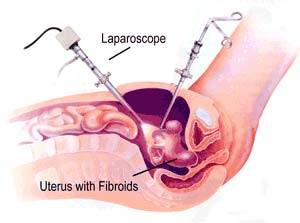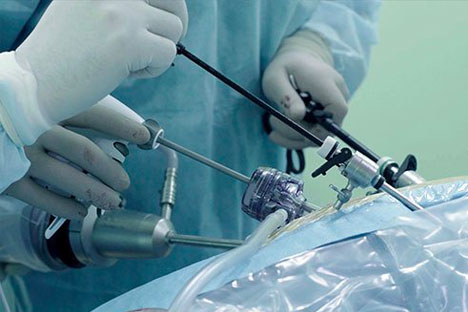What Is a Hysterectomy?
 Hysterectomy is an ob-gyn surgical procedure that’s employed to remove the uterus (womb). This procedure has become popular in the US and is done for many reasons, one of the most common being abnormal bleeding or fibroids.
Hysterectomy is an ob-gyn surgical procedure that’s employed to remove the uterus (womb). This procedure has become popular in the US and is done for many reasons, one of the most common being abnormal bleeding or fibroids.
A hysterectomy is removing your uterus, which, based on your specific situation, can also be combined with removing your:
- fallopian tubes
- ovaries
- cervix
After removing the uterus, it is impossible to conceive.
Hysterectomy is one of the most common surgeries performed on women in Manhattan Women’s Health and Wellness center.
Why You May Need the Procedures?
If you are young enough and would like to have more children (or even your first child), then it’s usually recommended that you undergo a myomectomy first to try to relieve your symptoms. In a myomectomy, the uterus is left intact, and the specialist makes attempts only to remove the fibroids (myomas or muscular growths).
Hysterectomies and myomectomies are discussed for several of the following reasons:
- Chronic constipation
- Heavier than usual menstrual cycles
- Bleeding during your periods that last longer than a week
- Pelvic pain or pressure
- Leg pain or backaches
- Urinating more frequently
- Difficulty starting a urine stream
On the other hand, a hysterectomy may be the best form of treatment for more severe conditions, such as:
- Cancer, including ovarian, cervical, or endometrial
- Uterine prolapse, when your uterus falls out of place
- Adenomyosis, when endometrial tissue moves outside of your uterus
- Severe endometriosis that hasn’t responded to other treatments
- Uncontrolled bleeding while giving birth
- Chronic pelvic pain
- Vaginal bleeding that continues despite various treatments
- Fibroids that are too large and have irreparably changed the structure of the uterus
You should evaluate all symptoms with a thorough consultation and examination by your local NYC gynecologist for an accurate diagnosis and treatment plan to exclude any serious underlying condition.
What Are the Different Types of Hysterectomy?
Hysterectomy is the second most common surgery performed in the U.S., accounting for about half a million surgeries per year. Depending on your age, the severity of your symptoms, and future lifestyle plans, you can decide which hysterectomy option is best for you.
Some hysterectomy options are:
- A radical hysterectomy removes all of your reproductive organs. It’s usually performed when you’ve been diagnosed with cervical or endometrial cancer. In most cases, a doctor carries out radical hysterectomy when they can perform other treatment options.
- During a partial hysterectomy, the specialist takes out only your uterus. A laparoscopic myomectomy may be performed on the rest of your organs to remove fibroids. Your doctor can recommend this procedure to treat ovarian, cervical cancer, uterine, etc. Benefits of partial hysterectomy include enhanced sexual enjoyment and more robust internal pelvic structure.
- A total or simple hysterectomy removes just your uterus and cervix. It’s ideal for women with fibroids who don’t want to lose their ovaries. This type of surgery is preferred more than a subtotal because there is no risk in the future of developing cervical cancer.
- Laparoscopic or robot-assisted laparoscopic hysterectomy is the most minimally invasive procedure. Benefits of robotic surgery include less pain after the operation, smaller incisions, and as a result, more minor scars.
How Is a Hysterectomy Performed?
 There are several avenues your surgeon may take to perform your hysterectomy, depending on your goals, as well as your gynecologist’s preferences.
There are several avenues your surgeon may take to perform your hysterectomy, depending on your goals, as well as your gynecologist’s preferences.
Removing your reproductive organs may be done by:
- A cut made surgically in your vagina.
- Three or four smaller incisions made through your belly, usually reserved for robotic hysterectomy
- A more significant cut made in your abdomen
- More minor cuts around your navel for laparoscopic removal
What are the Risks of Hysterectomy?
In addition to the normal risks associated with any surgical procedure, hysterectomy complications can include:
- Sex after hysterectomy can be painful
- Bladder or ureter injuries
- A loss of sexual interest or appetite
- Menopausal symptoms if your ovaries removed
- Higher risk of heart disease if your ovaries removed before natural menopause
What to Expect During Recovery From Hysterectomy?
After an abdominal or vaginal hysterectomy, you’ll be encouraged to get up and walk as soon as you wake from the anesthesia. After one or two days in the hospital, the specialist will send you home to monitor yourself for pain and excessive bleeding. You’ll leave with medication to prevent infection and relieve your pain. Expect to be back to normal in about four to six weeks.
Following a laparoscopic hysterectomy, you can expect many of the same side effects, but your recovery time is much quicker, typically from one to two weeks.
Scarring after the surgery is one of the most glaring differences between an abdominal (the most common) and a laparoscopic (the least invasive) hysterectomy. Laparoscopic hysterectomy scars are virtually non-existent as the tiny incisions heal quickly and leave no visible reminders. The abdominal hysterectomy scar heals but is more extensive. Your surgeon places it so that it falls in natural folds on your belly, but you most likely will have a visible scar.
We can now perform hysterectomies with the assistance of a robot that can make many hysterectomies outpatient procedures.
All symptoms should always be evaluated with a thorough consultation and examination by your gynecologist for an accurate diagnosis and treatment plan to exclude any serious underlying condition. Your gynecologist should always discuss laparoscopic myomectomy/hysterectomy, indications, options, and risks/benefits.
Important Reminder: This information intends to provide guidance, not definitive medical advice. Please consult the OB/GYN doctor about your specific condition. Only a trained, experienced gynecologist can determine an accurate diagnosis and proper treatment.
Have questions about the Laparoscopic Myomectomy/Hysterectomy procedure? Schedule an appointment with recognized OB-GYN doctor of Manhattan Women’s Health and Wellness.
Updated on Sep 23, 2023 by Manhattan Women’s Health and Wellness
Best-in-class
New York Gynecology Clinic
Manhattan Specialty Care in the Press

Call now to make an appointment with our highly rated Manhattan Gynecology doctors regarding your health. We look forward to seeing you!
book online now
(212) 378-9985
New York City Locations:
Manhattan Women's Health & Wellness (Upper East Side)
983 Park Ave, Ste 1D17
New York, NY 10028
(212) 389-1904
Manhattan Women's Health & Wellness (Midtown)
56 W 45th St, Ste 815
New York, NY 10010
(212) 677-7654
Manhattan Women's Health & Wellness (Union Square)
55 W 17th St, Ste 104
New York, NY 10011
(212) 378-9985